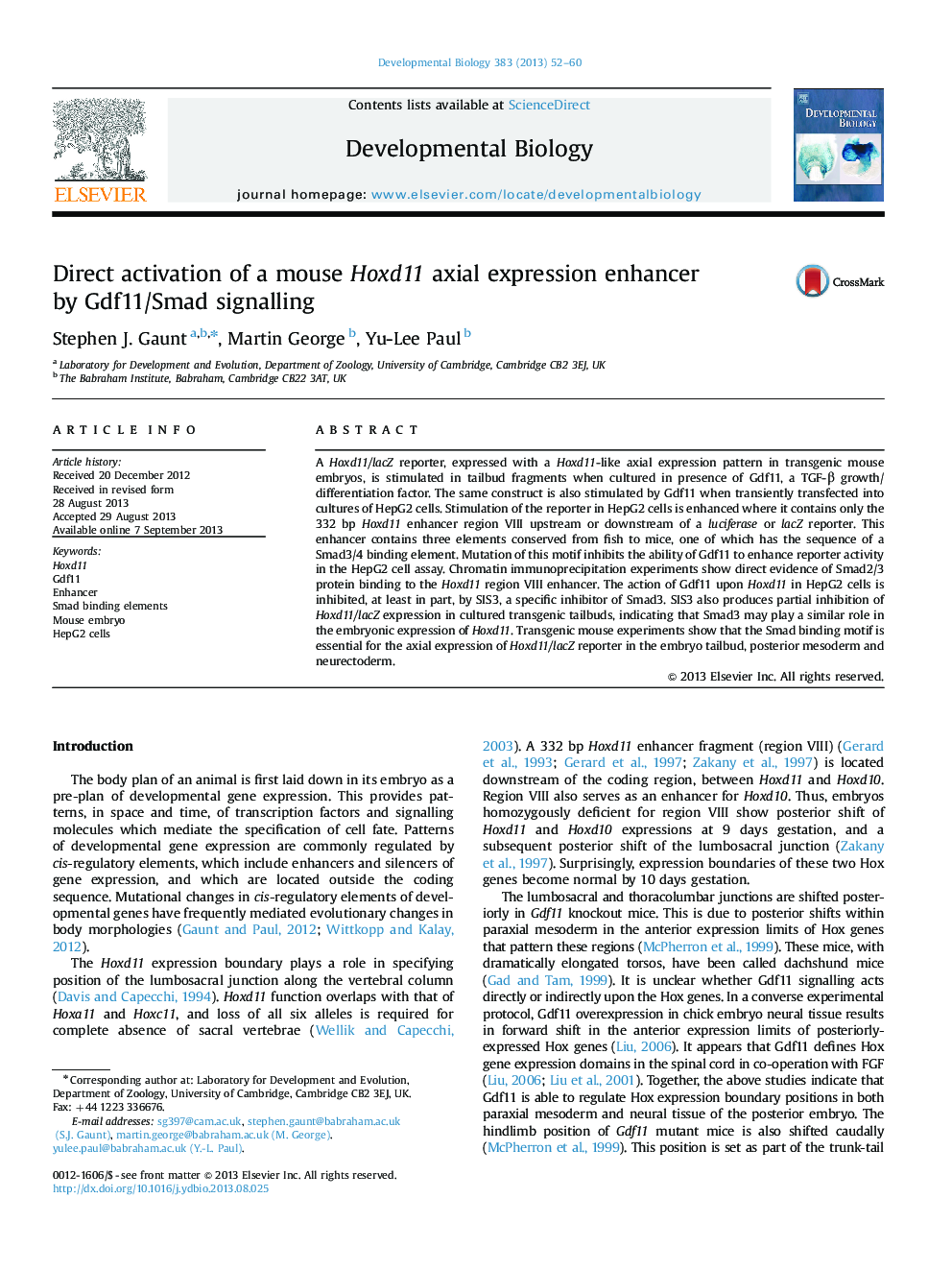| Article ID | Journal | Published Year | Pages | File Type |
|---|---|---|---|---|
| 10932024 | Developmental Biology | 2013 | 9 Pages |
Abstract
A Hoxd11/lacZ reporter, expressed with a Hoxd11-like axial expression pattern in transgenic mouse embryos, is stimulated in tailbud fragments when cultured in presence of Gdf11, a TGF-β growth/differentiation factor. The same construct is also stimulated by Gdf11 when transiently transfected into cultures of HepG2 cells. Stimulation of the reporter in HepG2 cells is enhanced where it contains only the 332 bp Hoxd11 enhancer region VIII upstream or downstream of a luciferase or lacZ reporter. This enhancer contains three elements conserved from fish to mice, one of which has the sequence of a Smad3/4 binding element. Mutation of this motif inhibits the ability of Gdf11 to enhance reporter activity in the HepG2 cell assay. Chromatin immunoprecipitation experiments show direct evidence of Smad2/3 protein binding to the Hoxd11 region VIII enhancer. The action of Gdf11 upon Hoxd11 in HepG2 cells is inhibited, at least in part, by SIS3, a specific inhibitor of Smad3. SIS3 also produces partial inhibition of Hoxd11/lacZ expression in cultured transgenic tailbuds, indicating that Smad3 may play a similar role in the embryonic expression of Hoxd11. Transgenic mouse experiments show that the Smad binding motif is essential for the axial expression of Hoxd11/lacZ reporter in the embryo tailbud, posterior mesoderm and neurectoderm.
Keywords
Related Topics
Life Sciences
Biochemistry, Genetics and Molecular Biology
Cell Biology
Authors
Stephen J. Gaunt, Martin George, Yu-Lee Paul,
